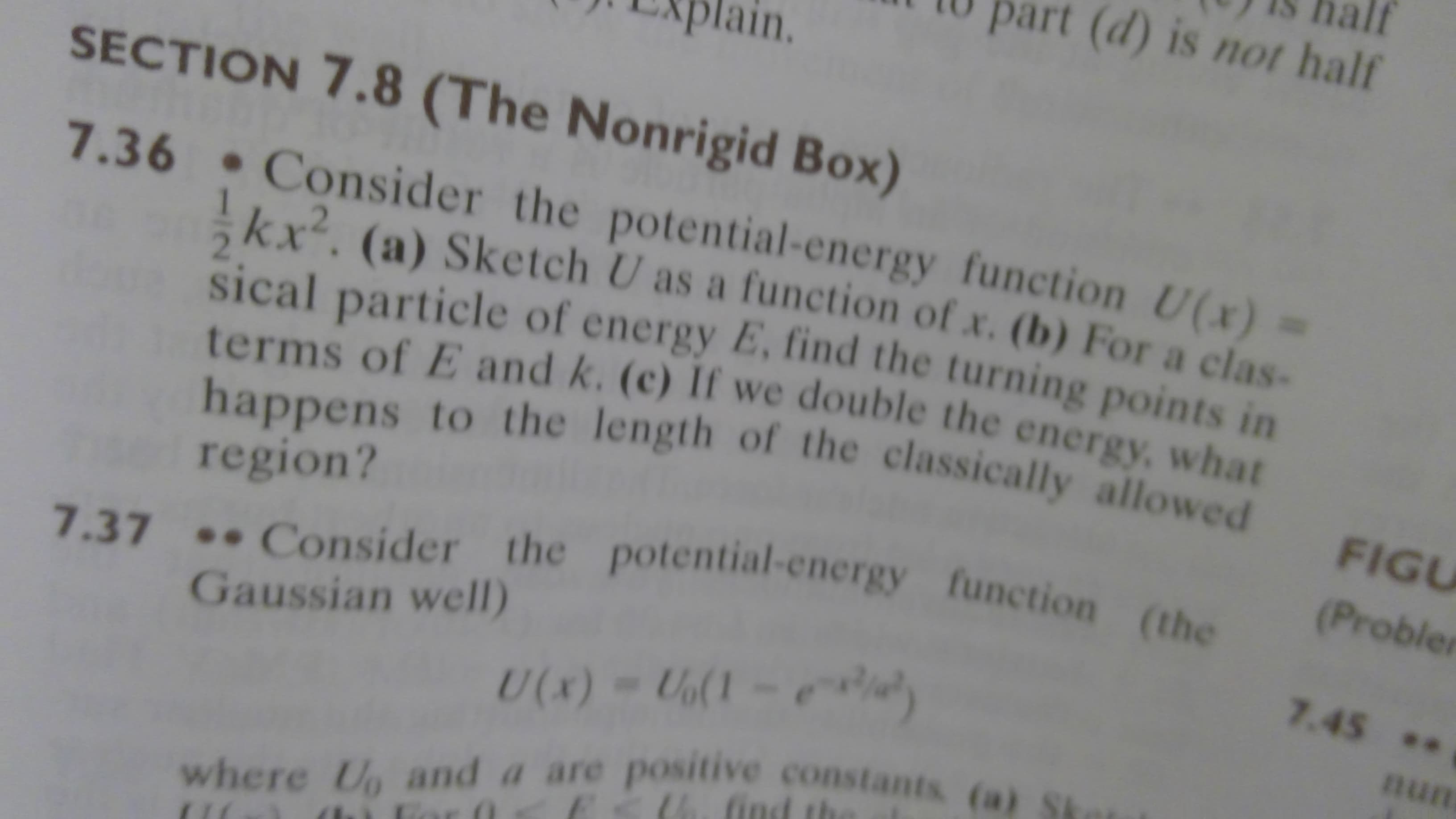part (d) is not half in. SECTION 7.8 (The Nonrigid Box) 7.36 Consider the potential-energy function U(x) 1 kx2. (a) Sketch U as a function of x. (b) For a clas- sical particle of energy E, find the turning points in terms of E and k. (c) If we double the energy, what happens to the length of the classically allowed FIGU region? (Probler 7.37 .Consider the potential-energy function (the Gaussian well) 7.45. U(x)- Un(1- e nun where U and a are positive constants (a)
part (d) is not half in. SECTION 7.8 (The Nonrigid Box) 7.36 Consider the potential-energy function U(x) 1 kx2. (a) Sketch U as a function of x. (b) For a clas- sical particle of energy E, find the turning points in terms of E and k. (c) If we double the energy, what happens to the length of the classically allowed FIGU region? (Probler 7.37 .Consider the potential-energy function (the Gaussian well) 7.45. U(x)- Un(1- e nun where U and a are positive constants (a)
Related questions
Question
How would I be able to sketch the graph in problem 7.36?

Transcribed Image Text:part (d) is not half
in.
SECTION 7.8 (The Nonrigid Box)
7.36 Consider the potential-energy function U(x)
1
kx2. (a) Sketch U as a function of x. (b) For a clas-
sical particle of energy E, find the turning points in
terms of E and k. (c) If we double the energy, what
happens to the length of the classically allowed
FIGU
region?
(Probler
7.37 .Consider the potential-energy function (the
Gaussian well)
7.45.
U(x)- Un(1- e
nun
where U and a are positive constants (a)
Expert Solution
This question has been solved!
Explore an expertly crafted, step-by-step solution for a thorough understanding of key concepts.
This is a popular solution!
Trending now
This is a popular solution!
Step by step
Solved in 5 steps with 5 images
